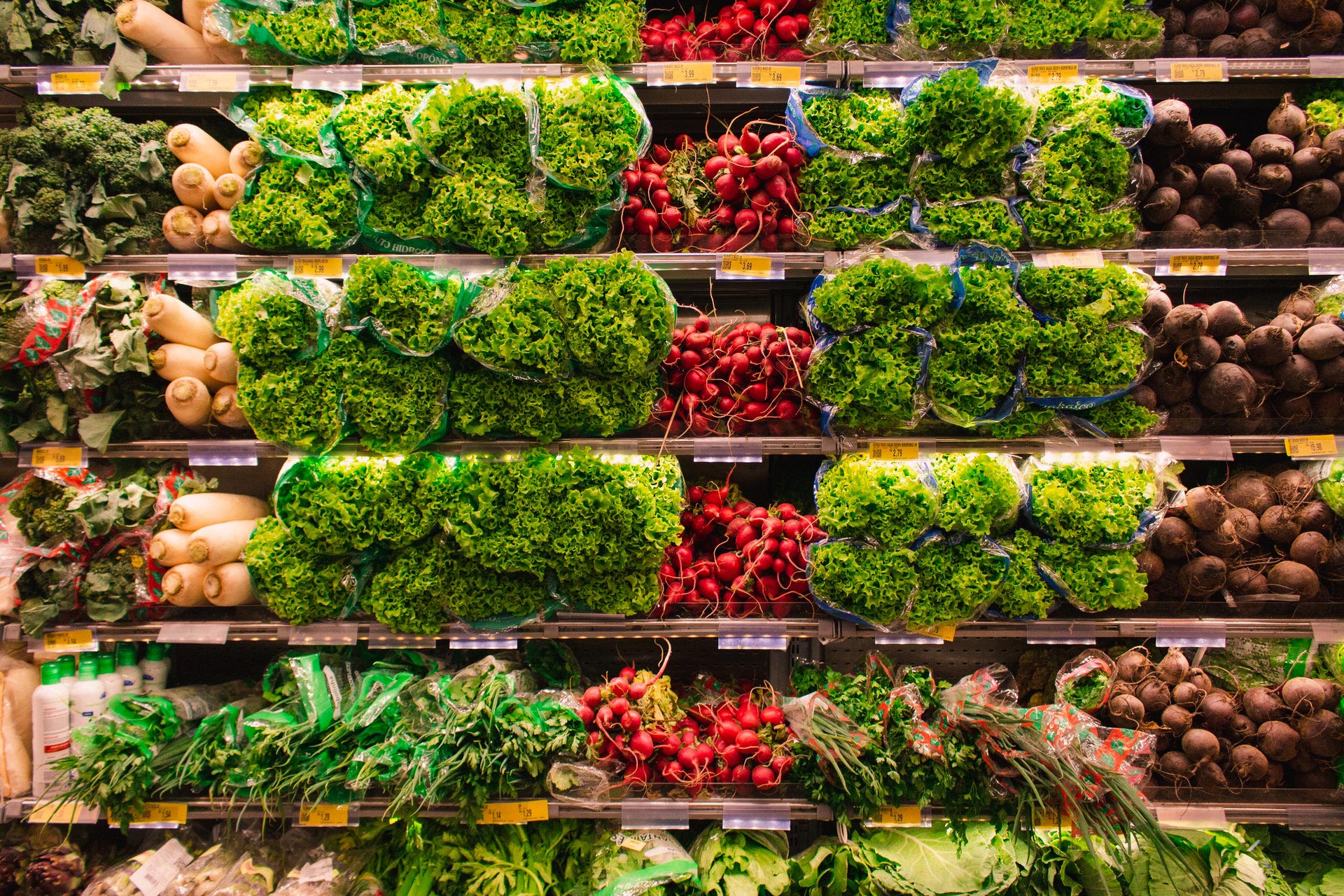More than 37 million people in the United States don’t have enough to eat, according to Feeding America. And in April, food banks were reporting a whopping 70% increase in demand as unemployment surged amid the coronavirus pandemic. In states hardest hit, demand has more than doubled.
Escalating the problem, when schools are closed as many as 30 million children may go without meals provided by the National School Lunch Program.
Problems are compounded
Three criteria are typically used to identify food insecurity: distance to grocery stores, family income, and the availability of transportation. The data visualization above presents data from the USDA Food Access Research Atlas along with poverty and transportation access data from the U.S. Census. (Read more about methods and data sources.)
Living far from a grocery store may not pose a problem for families that are well-off with access to vehicles. However, the combination of living in poverty, lacking transportation, and living far from a grocery store poses a logistical nightmare for putting healthy food on the table.
Access to private vehicles has become even more important during the coronavirus era when public transportation, if available, is risky.
Food insecurity is growing
Even before the pandemic, one in nine U.S. households was “food insecure”—that is, they had difficulty at some time during the year procuring enough food due to lack of money and other resources. Food insecurity is often linked to chronic diseases such as high blood pressure, coronary heart disease, cancer, and arthritis—many of the same diseases that increase people’s vulnerability to coronavirus.
Marginalized communities are disproportionately affected by food insecurity. Smaller neighborhood stores and gas stations may carry processed and frozen foods but little fresh produce or meat. The U.S. Department of Agriculture (USDA) estimated in 2010 that 11.5 million Americans with low incomes lived more than a mile from a supermarket.
While some Americans can purchase food online for home delivery, low-income households that depend on the federal Supplemental Nutrition Assistance Program (SNAP) are not permitted to purchase groceries online with SNAP in 44 states. More than 14.6 million Americans (12.2%) received SNAP assistance in 2018.
Food charities filling the gap
While food banks are reporting a 70% increase in need as people lose their jobs due to the coronavirus pandemic, food banks are seeing:
- a decrease in volunteers in some places as retirees (the most prevalent volunteers) shelter at home;
- a decrease in food donations from grocery stores whose shelves have been emptied by worried customers;
- a decrease in food donations from restaurants and other businesses that are closed; and
- a big increase in the cost of non-perishable staples such as peanut butter, canned vegetables, beans, pasta, and rice—items that used to be donated by stores but now must be purchased.
Food banks are scrambling to meet the needs of hungry Americans. Quickly adapting to overcome today’s obstacles, many food banks are offering drive-through service with prepackaged boxes and delivering bagged lunches and breakfasts to replace school meals.
But more help is needed.
Feeding America—a network of 200 food banks and 60,000 food pantries and meal programs nationwide—suggests four ways that people can help:
- Volunteer from home – food banks might need administrative help such as note-writing or data entry;
- Volunteer in the community to help with home deliveries and mobile pantries;
- Raise awareness of food bank needs with friends and on social media;
- Raise money to support your community food bank.
Check first with your local food bank about what is needed.
Meals on Wheels is also seeing increased need as it provides nutritious meals to seniors across the country. More than 7 million seniors live in poverty and more than 5.5 million seniors are food insecure. The need for volunteers varies by community. Learn more about volunteering here.
Methods and data sources
The data visualization above displays the percent of individuals in each county with low food access, those living more than one mile (urban areas) or 20 miles (rural areas) from the nearest supermarket, supercenter, or large grocery store. All counties where more than 10% of individuals have low food access are displayed on the map. Nationally, 20.1% of individuals have low food access. These data are from the USDA Food Access Research Atlas, which uses the 2015 STARS directory of stores authorized to accept SNAP benefits and the 2015 Trade Dimensions TDLinx directory of stores.
County-level data on families in poverty and households with no car were compiled from the 2019 release of the Census Bureau's American Community Survey five-year estimates, which represent average characteristics from 2014-2018. The margins of error, as reported by the Census, are presented in the map tool tip (visible when you click or hover over a county on the map). Nationally, 10.1% of families live in poverty and 8.7% of households have no car.
According to the U.S. Department of Agriculture, food insecurity means that “households were, at times, unable to acquire adequate food for one or more household members because they had insufficient money and other resources for food.” In 2018, 11.1% (14.3 million households) were food insecure at some time during the year.





